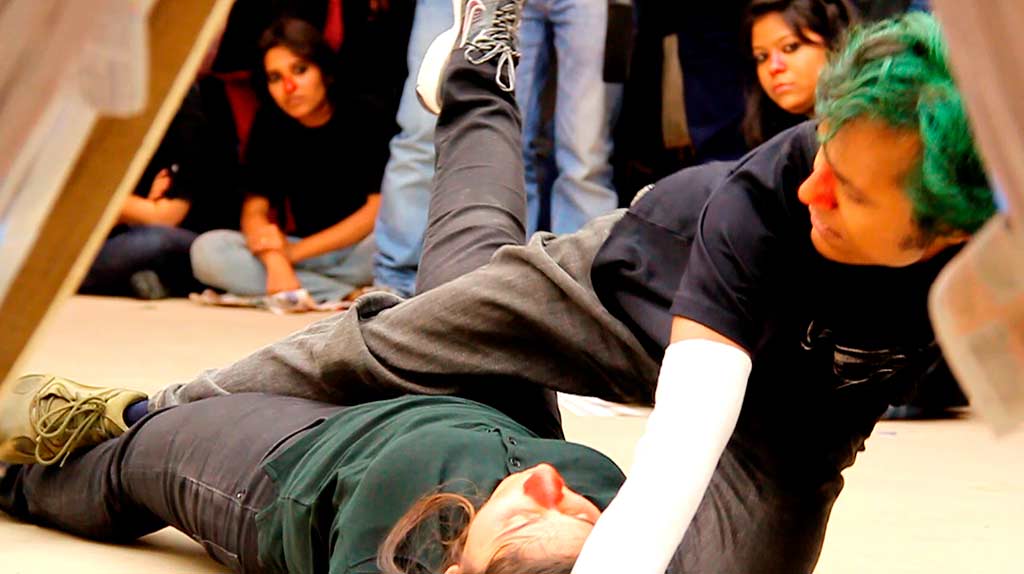House on Wheel
A look at theatre practitioner, artist and performer Samudra Kajal Saikia’s 2012 Disposable House Project, and why, more than ever today, the dialogue between space and body is vital in understanding the ephemeral – and performative – nature of existence itself
Praveena Shivram
Every childhood memory makes space for the ‘house-house’ game. You know, the one where the ‘house’ is filled with pockets of imaginary conversation and food, with greetings and goodbyes, and an ocean of time that seems to be going nowhere. Then, one fine day, straight from the capitalist oven, comes irresistible Monopoly, and this ‘house’ now has a shape, a colour and a value. Somewhere along the way, the houses converge, much like memories do, and we cannot distinguish between the two. Conversation changes based on the colour of the house, food changes based on its value and greetings and goodbyes get impossibly stuck, wedged between mezzanine floors and Italian marble. The house settles into our open arms, an embrace that is neither comforting nor constricting. And today, as that house grows bigger and bigger and our hands grow wider and wider, the embrace becoming tighter and tighter, our identities, ideologies and ideals are growing smaller and smaller, quietly slipping through the cracks. Into this volatile vortex of material happiness, artist, theatre-practitioner and performer Samudra Kajal Saikia placed his ‘Disposable House’ project. ‘When the city is shifting constantly, can a concrete building be the settlement for my body? Where does the “dream house” lead you to – when ‘dream’ itself is a moving phenomena?’ he asks.
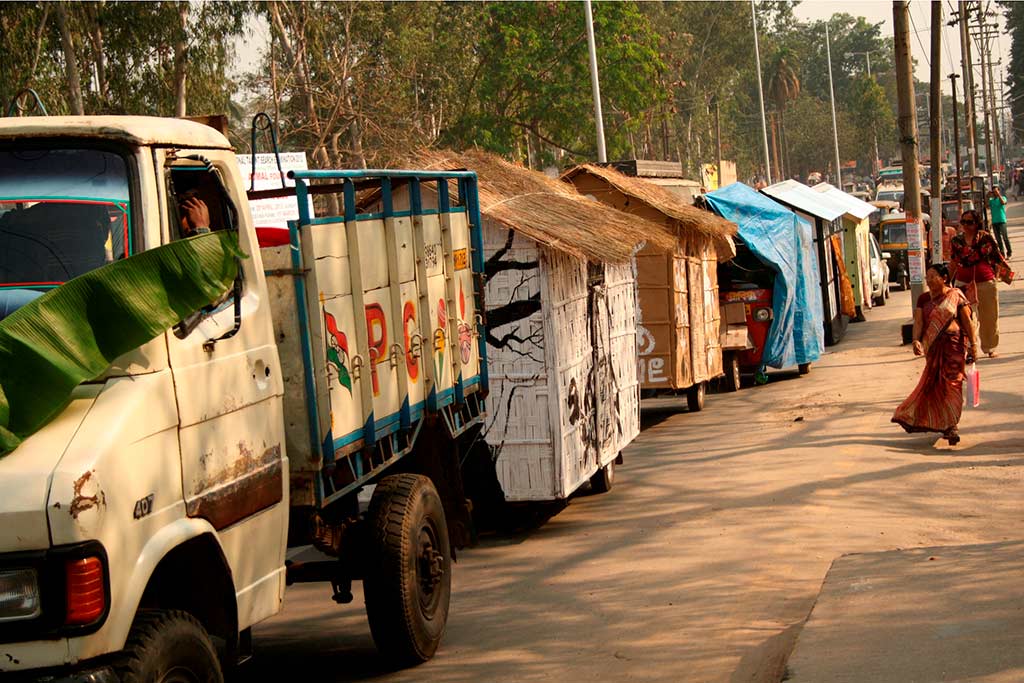
In 2012, five houses that looked straight out of a giant board game, were mounted over tempos, their walls filled with artwork pertaining to specific themes – Sufi house, House of Displacement, Urban House, House of Social Norms and Kankhowa’s House (the body house of the Actor) – and taken on a procession through the streets of Guwahati before stopping by the banks of river Brahmaputra, where they were eventually abandoned. This public art project, funded by FICA public art grant 2010, was a culmination of Samudra’s deep dialogue with the word ‘disposable’ that is, somehow, so many things at the same time – clinical, functional, ephemeral and almost contrite. ‘You are right, it is “so many things at the same time” and really difficult to explain in a line. I do not remember exactly the time I began using this word first and even if I do remember, over a period of time the connotations have changed,’ says Samudra. ‘More than a decade ago, I started executing a one-of-a-kind performance that I called Disposable Theatre. The central argument behind the method was to reclaim the spatial and ephemeral specificity of live art. It was a remonstration against the national, phenomenal and grandiose theatre that used to repeat itself in many “shows” or staging(s). If theatre is live how can it be repeated? So I started doing a theatre that destroyed its own evidences on the spot. This experience took me deeper into the art of performance, which is different from other tactile art. Here, I do not produce a product, object or thing, but I transform my very body into art. As the art is transient, the body itself is another perishable thing. So this single word – disposable – helped me rebel against the thingification of art, to re-connect with certain traditional cultural beliefs, and to find out a work-pattern as well.’
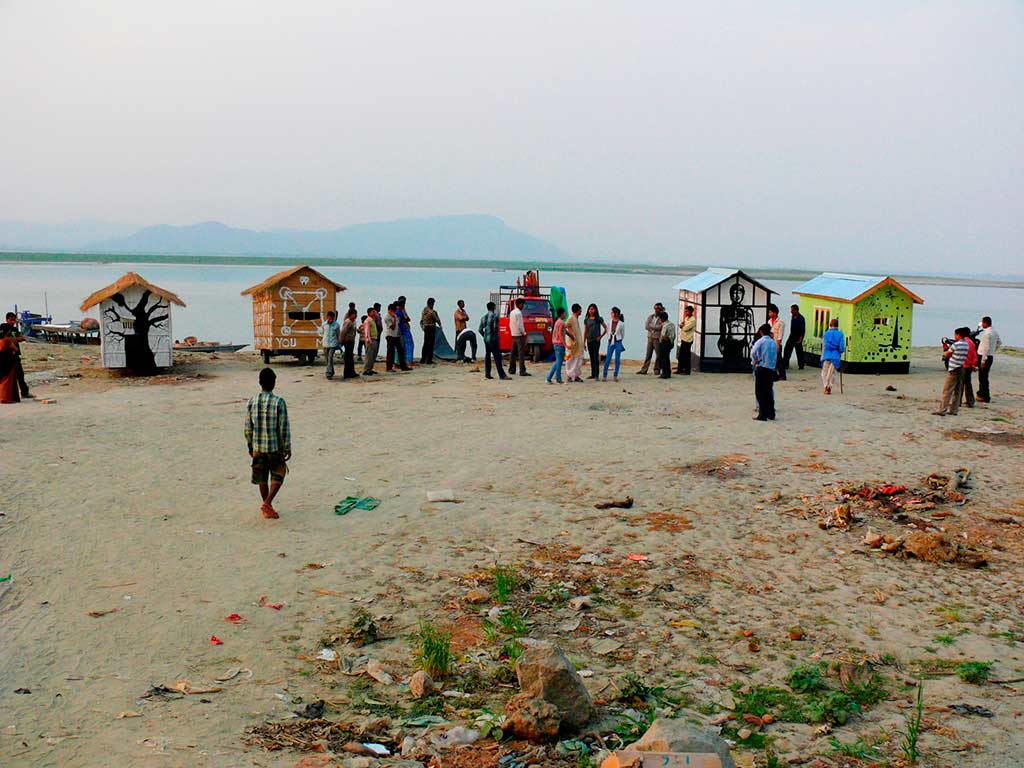
All of which Samudra does in the Disposable House project – rebellion happily met the eventual ‘disposal’ of the houses by the river bank, cultural belief found a resonance with bhela ghar, a hay house built and burnt during the harvest festival of Bhogali in Assam, and work pattern highlighted the need for more public art projects that engage the community, especially in a ‘country full of linguistic and cultural divisions’. ‘I grew up in a culturally happening environment. I liked and enjoyed the collective works in the traditional arena of my village, such as the bhela ghar tradition. Not only because of its spectacular nature or the personal memories associated with the tradition but also for treating the house as a temporal or momentary space. In Assamese, the word “Bhel” sometimes denotes “body”. So I easily developed an interest in bringing a reference of bhelaghar into my work. In 2001, when I moved to Santiniketan, there too I was part of the collective cultural phenomenon. Actually, collectivism is not something that I have adopted recently or consciously. I’ve seen how everyone performs together and nurtures the collective consciousness alongside the subjective presence in my village. Very truly, without a sense of togetherness, I simply cannot think of art.’
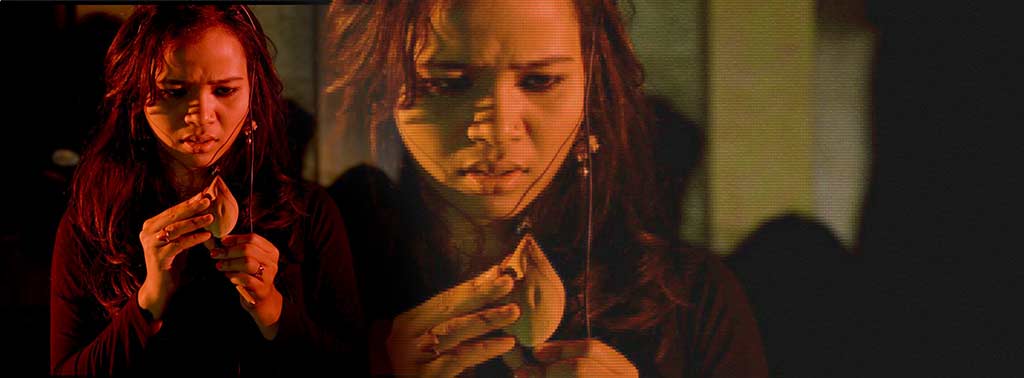
This idea of the ‘collective’ is what informs a major part of Samudra’s Disposable House project, whether you look at it from the creator’s perspective or the spectator’s. Its impact was collective too, as a spectacle that inspired curiosity and a statement that inspired thought. As the houses moved through traffic, seemingly on their own, with Samudra and his colleague Anuradha holding lotuses in their hands and walking ahead, along with a group of musicians singing Sufi songs, people stopped to stare, to point, to stifle a smile, to call out to friends, to wonder, to think, and most importantly, to allow it into their collective consciousness – perhaps a natural by-product of Samudra’s own intentions of rooting his work in the collective. ‘Sometimes, I call the process of instigation “creative curating”. I like making things interdisciplinary in the true sense of the word and create an environment where people from various backgrounds can come and work together. The best part of this process is that the process itself becomes work – vibrant with different energies,’ he says.
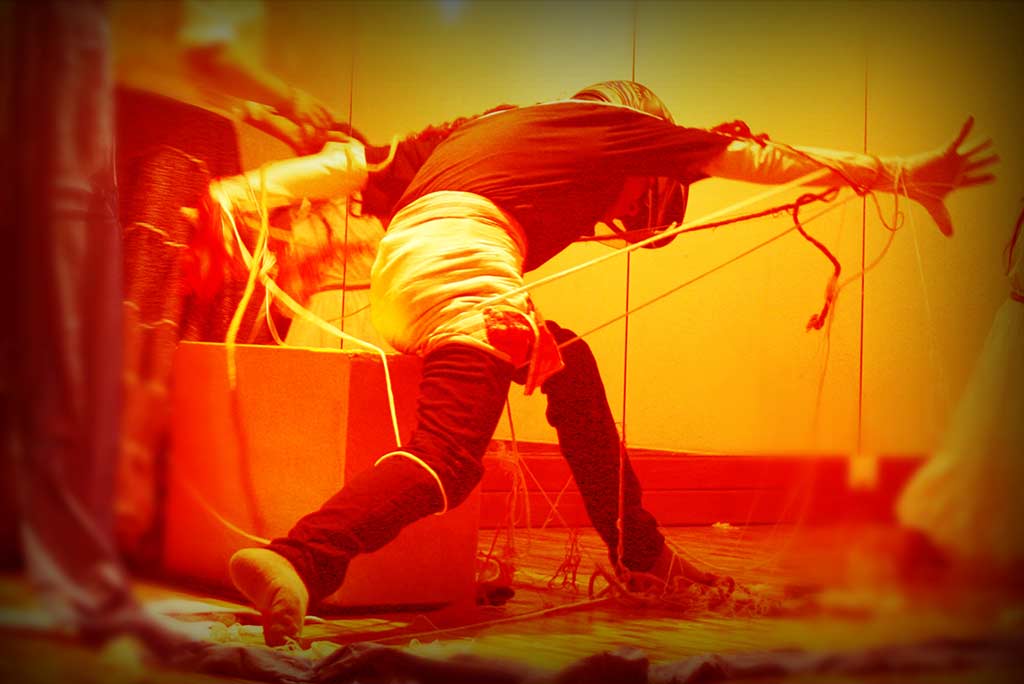
While the Disposable House Project included several artists over a period of time, what stood out for me was Samudra’s own set of ‘different energies’ that he brought into the project through the discourse on space and identity, and even in how the project was perceived as a ‘tour’, bringing to light that almost nomadic quality of life so rigorously shunned by civil society. ‘Stating house as a “settlement” is a pretension of civil society. The ideas around settlement, identity and history (whenever we write history, we are tempted to see it as our history and their history) are problematic as are ideas around nation and state. Assam and the other North East Indian states have been in turmoil for more than three decades on the issues of immigration causing a political and cultural identity crisis. The pseudo-settlement taught us intolerance towards a nomadic nature of life. So this phenomenal, performative and visually nosy move shocked many eye-witnesses in the city. Three years later, we are talking based on available documentation. But think of a bystander, a witness, a passerby, a spectator on the roadside in a city named Guwahati on that particular day. Think of that nameless, faceless spectator for whom it was a sudden encounter with extraordinariness on just another ordinary day. Five life-sized houses moving on the road, if nothing else, would have at least produced a moment of curiosity. Sometimes, a performance serves its purpose within a fraction of a moment,’ he says.

I completely agree. Watching the video of the project, I was struck by that, of how that ‘fraction of a moment’ really caught people unawares. It caught me too, twice – when a man riding pillion on a motorbike is busy trying to capture this on camera; and when, at a signal, a man peeks into the ‘window’ of one of the houses. And right there, you had the futility of capturing a moment and the power of living it. It was a telling reflection too of the physicality of space and the intangibility of the memory of that space. ‘Spatial experiences have a lot to do with my artistic practices. Only because of that spatial concern, I came to promenade theatre from the proscenium architectural closet. Theatre and performance are part of architectures. In certain nuanced times, house and home were interchangeably usable; likewise, body and house seems to do the same. From a small town in Assam to Santiniketan, then Baroda and New Delhi, the transformation of spaces caught my eyes. In this post-globalised state of being it is even more interesting, because we belong to a constantly shifting space in time,’ says Samudra.
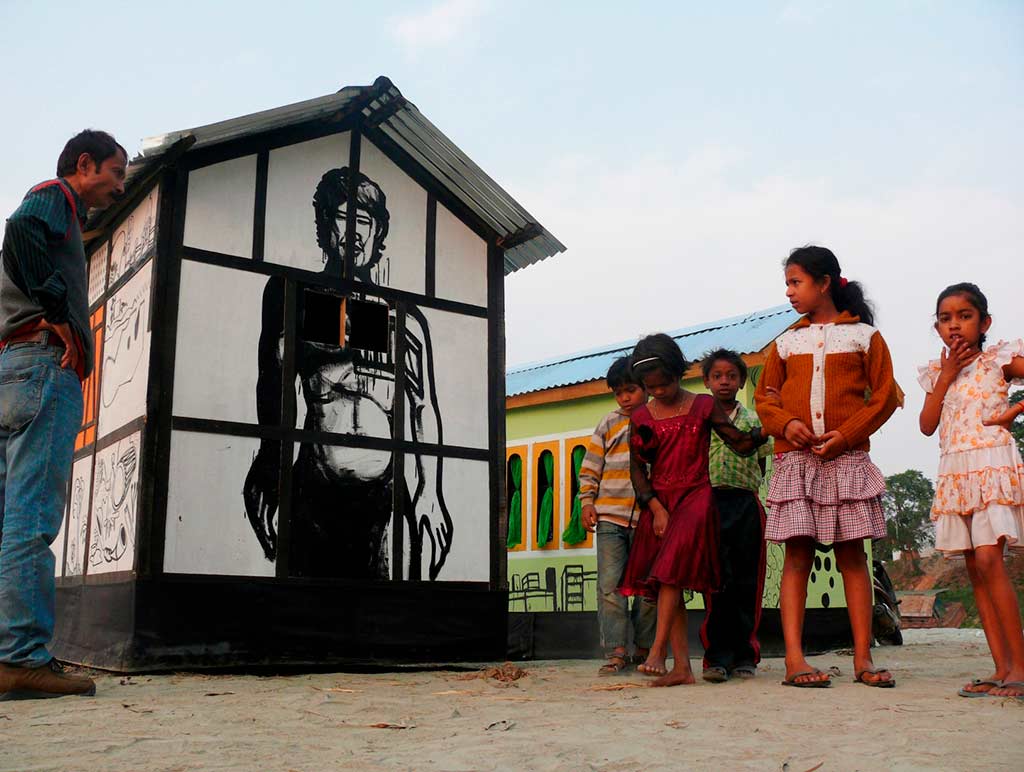
The nature of performance art too, in India, belongs to a ‘constantly shifting space’ as it struggles to construct and deconstruct its own identity. ‘How public is public art? In one way we say that performance art is meant for all, and then we expect an expert viewing from a trained audience. We do not have a healthy environment for discourses. We do not have a trained spectator. Now, I do not know how to train a “spectator”… maybe doing is the only way,’ he says, and adds, ‘One more thing, we are highly affected by a lack of tolerance. We are not learned enough to tolerate the ideas of others. Every time a performance artist is forced to define “what is performance art”, it is a big pain. In fact, no other form of art is questioned each time it takes place. Existence itself could be a definition for performance, but we are not ready yet to accept this.’
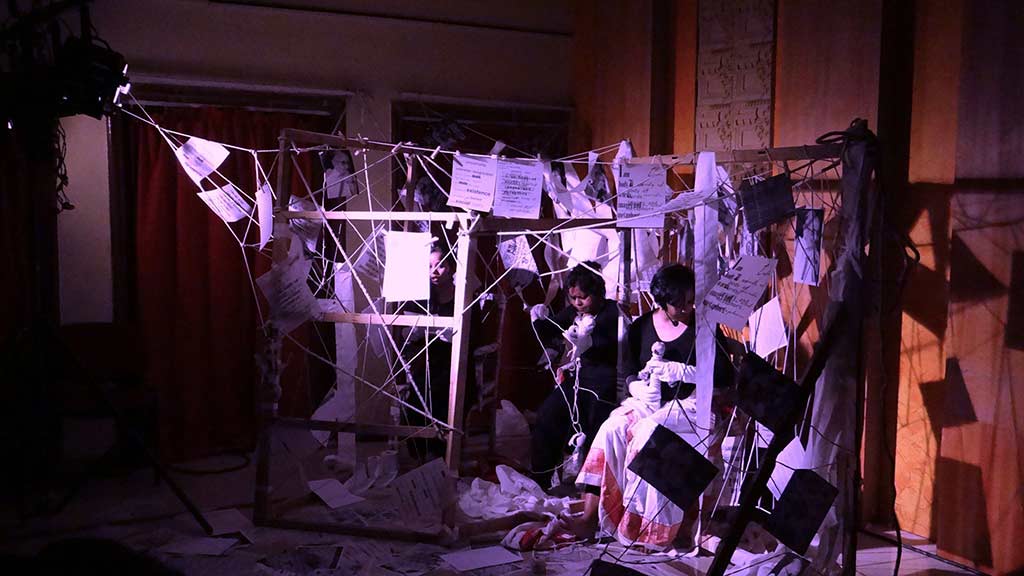
Samudra echoes the sentiments of many, especially in the current jingoistic climate of morals and beliefs. But somewhere in the interview, when Samudra talks about his work, he says this: ‘I am also fond of nonsense. In all my works, many times, I deliberately keep a moment for nonsense. It gives me immense pleasure.’
As it would Lewis Carroll, too; and as it would do for us too, if we only stopped to see that sometimes it is the best state of mind to be in, whether one is talking about space, body, house or country. And that is Samudra’s biggest success that the Disposable House made (and makes) us stop.
